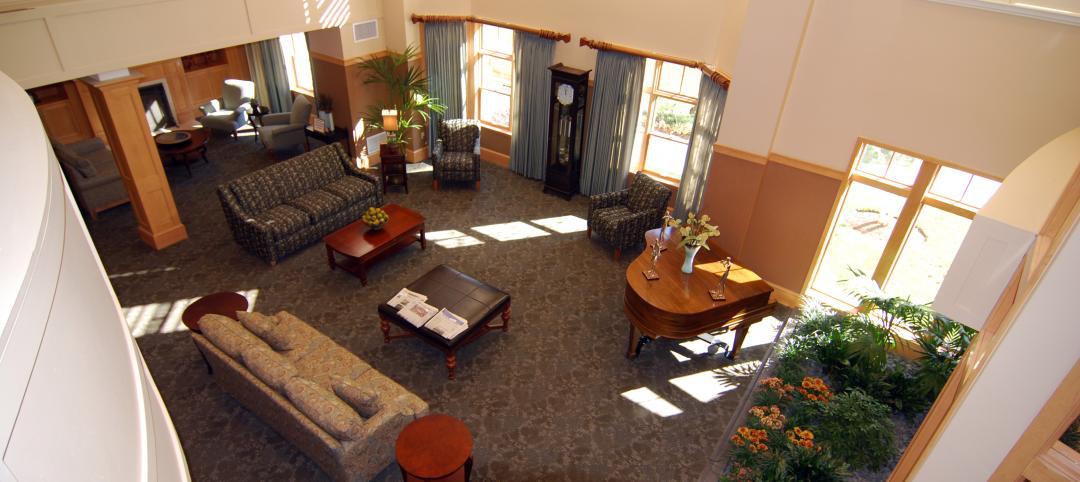Beyond the door material, another important decision is determining whether a more sophisticated door system is required for the application. In the MasterFormat section 08 30 00, Specialty Doors and Frames, a number of door types are listed for special functions, access locations, sliding and folding hardware, and even pressure-resistant types. Among these, there are several mentioned by Building Teams for consideration today:
• Pivoted or hinged doors. Both pivots and hinges can be used interchangeably, although hinged, prefabricated doors are generally less expensive. The presentation of the door types is the key factor. A hinged door typically reveals a knuckle spanning 4½ inches, while a pivot door’s profile is much smaller, with a 1½-inch knuckle. (Means Illustrated Construction Dictionary defines a door knuckle as “one of the enlarged, protruding, cylindrical parts of a hinge through which the pin is inserted.) The pivot door also offers a higher level of durability, making it a common choice for commercial applications.
• Balanced doors. Ideal for windy climates, a balanced door is a more sophisticated, engineered system for exterior entrances. “The balanced door system is a complete assembly where the hanging and closing of the door is controlled by the door system, negating some of the effects of excessive wind conditions,” says Jim Berg, a veteran door systems consultant.
If a balanced door isn’t in the budget, then pivoted or hinged doors need to be designed with higher opening and closing forces, as more of the door leaf is exposed to the wind.
• Automatic and revolving doors. Automatic doors are commonly used to meet the requirements of the Americans with Disabilities Act, or simply to handle highly trafficked entrances, as in hospitals and grocery stores. Because the price difference between automatic and revolving doors is substantial, revolving doors are usually reserved for buildings with significant weather requirements.
Revolving doors can also be helpful in mitigating the effects of strong negative and positive air pressures created by the HVAC systems and outdoor conditions, which cause wear and tear to a typical door. Consequently, the number of service calls is reduced with revolving or vestibule door systems.
According to Studio 08 Principal Rick Lewis, the most common type of revolving door is the single-post door. However, “Many of the airports are now using a type that allows more people to be in the door unit at one time, to move more traffic,” he says. Today there are small, three- and four-wing models for lower-traffic applications, while the large, two-wing or three-wing automatic revolving doors are more common in retail centers, hospitals, and transportation centers.
In most applications, a low-energy power operator meeting ANSI A156.19 (Standard for Power Assist and Low Energy Power Operated Doors) is specified as an ADA-compliant installation. However, for industrial settings, a heavy-duty power operator compliant with ANSI A156.10 (American National Standard for Power Operated Pedestrian Doors) is used. The industrial types are often specified with a ramp and guides, as the doors generally don’t stop and reset if a person or object enters the sensory field.
While the lower energy operators do stop and reset, this action can eventually wear down the mechanism. “Currently, manufactured units are considerably better than the ones that first came out 20 years ago,” says Lewis. “However, an ANSI A156.10 unit requires a lot of maintenance because the door operator is used each time a person, cart, or motorized vehicle passes through the opening.” Lewis says there is considerable power and momentum in the door as an operator is functioning, and “this causes not only the operators to receive a lot of abuse, but also the doors and frames.”
While retrofitting ordinary doors into automatic doors can be difficult and expensive, there are cases where there is no way around the problem for certain types of buildings, such as churches, temples, mosques, and other religious institutions, which are now required by ADA standards to update their access points. +
Related Stories
| Feb 10, 2012
Task force addresses questions regarding visually graded Southern Pine lumber
Answers address transition issues, how to obtain similar load-carrying capabilities, and why only some grades and sizes are affected at this time.
| Feb 10, 2012
Atlanta Housing Authority taps Johnson Controls to improve public housing efficiency
Energy-efficiency program to improve 13 senior residential care facilities and save nearly $18 million.
| Feb 10, 2012
Besculides joins New York Office of Perkins Eastman as associate principal
Besculides joins with more than 17 years’ experience in design, business development, and account management for the government, healthcare, and corporate practice areas with a particular focus on the financial and media sectors.
| Feb 10, 2012
Mortenson Construction research identifies healthcare industry and facility design trends
The 2012 Mortenson Construction Healthcare Industry Study includes insights and perspectives regarding government program concerns, the importance of lean operations, flexible facility design, project delivery trends, improving patient experience, and evidence-based design.
| Feb 10, 2012
LAX Central Utility Plant project tops out
Construction workers placed the final structural steel beam atop the Plant, which was designed with strict seismic criteria to help protect the facility and airport utilities during an earthquake.
| Feb 8, 2012
Nauset completes addition and renovation for Winchester senior living community
Theater, library, fitness center, and bistro enhance facility.
| Feb 8, 2012
Mega-malls expanding internationally
Historically, malls have always been the icons of America – the first mall ever was built in Minneapolis in 1956.
| Feb 8, 2012
World’s tallest solar PV-installation
The solar array is at the elevation of 737 feet, making the building the tallest in the world with a solar PV-installation on its roof.
| Feb 7, 2012
AIA introduces seven new contract documents to Documents-On-Demand service??
AIA Contract Documents are widely-used standard form contracts among the building industry to support construction and design projects.
| Feb 7, 2012
Data center construction boom driven by healthcare and technology
The study includes insight and perspective regarding current investment plans of stakeholders, potential challenges to the data center boom, data center efficiency levels, the impact of new designs and technologies, and delivery methods.
















